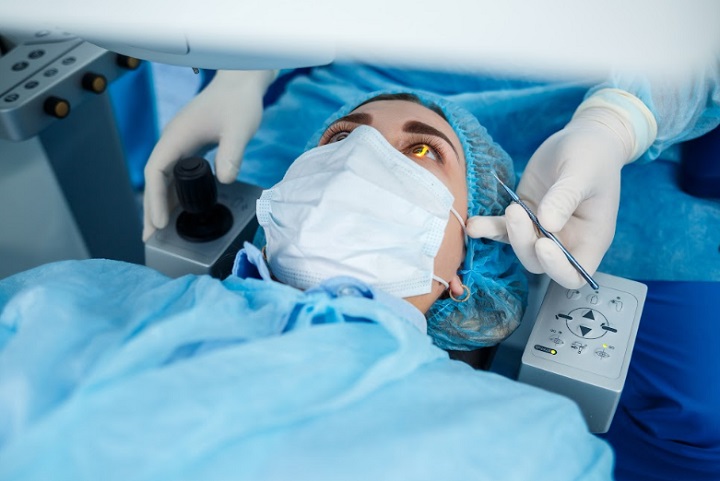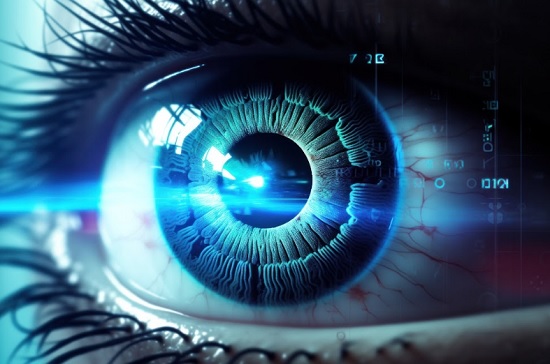The quest for sharper vision has always been a significant aspect of human health and well-being. Innovations in technology have led to a dramatic shift in vision correction, empowering sight in new and exciting ways. Technology’s impact on vision correction is expansive and transformative, from sophisticated lenses to non-invasive surgical techniques.
Understandably, the integral role of key service providers in this field cannot be underestimated. For instance, Revision, an eminent eye clinic, is making strides in this space. Through a combination of state-of-the-art technology and expert clinical practices, they offer comprehensive eye care services that are revolutionizing the way vision defects are treated. This impact sets a robust path toward a world where traditional visual aids like glasses and contact lenses might no longer be the only solutions for vision correction.
New Generation Contact Lenses And Glasses
Today’s contact lenses and glasses are vastly different from the ones that existed decades ago. Developments in technology have made them more comfortable, effective, and even stylish. For instance, some contact lenses can now correct astigmatism, an advancement that was unthinkable just a few years ago.
Transitioning to the realm of glasses, the story is equally compelling. The emergence of digital lenses has improved visual accuracy and comfort. Meanwhile, progressive lenses provide a seamless transition between near and far vision.
Non-Invasive Surgical Techniques
If you’ve ever dreamed of ditching your glasses or contact lenses, non-invasive surgical techniques could be the answer. Procedures like LASIK and PRK have become commonplace thanks to advancements in laser technology. These procedures reshape the cornea, correcting refractive errors such as myopia, hyperopia, and astigmatism.
The latest addition to these techniques is SMILE (Small Incision Lenticule Extraction). It’s less invasive and has fewer complications, making vision correction surgery safer and more accessible.
Smart Implants And Bionic Eyes
As we shift gears towards the future, smart implants and bionic eyes open up new horizons. Smart implants like the accommodating intraocular lens can change shape like a natural lens, providing clear vision at all distances.
Furthermore, there’s no shortage of research in the bionic eye realm. Bionic eyes could offer a new lease on life for people with severe vision impairment. The technology uses a camera and an implant to send signals to the brain, which are then interpreted as visual information.
Portable Diagnostic Devices
Often, early diagnosis is the key to preventing vision loss. Fortunately, new technology has made diagnosing vision problems easier and more accessible. Portable devices now allow for quick and efficient eye examinations, eliminating the need for bulky equipment and potentially catching problems earlier.
Artificial Intelligence In Vision Correction
Artificial intelligence (AI) has an increasingly crucial role in vision correction. For instance, AI systems can assist in diagnosing vision-related disorders with high accuracy, often catching conditions that the human eye may miss.
Moreover, AI-powered apps have been developed to assist individuals with low vision or blindness. These apps can describe surroundings, read text, and recognize faces, enabling users to navigate the world more easily.
Adaptive Eyewear
Imagine a pair of glasses that adapt to your visual needs automatically. Sounds like a fantasy? Not anymore. Adaptive eyewear technology has made significant strides recently, bringing this concept closer to reality.
Using electronically adjustable lenses, adaptive eyewear can change focus in real-time based on what the wearer is viewing. This offers a personalized visual experience, potentially reducing the strain of switching between different prescription glasses for different activities.
Blue Light Filtering Technology
As digital devices have become integral to our lives, the concern over the harmful effects of blue light has grown. Thankfully, technology has stepped in to address this issue as well.
Blue light filtering lenses have become increasingly popular. These lenses filter out the blue light emitted by digital screens, helping to reduce digital eye strain and maintain overall eye health. Some software even changes the color temperature of screens based on the time of day to lessen exposure to blue light.
Teleophthalmology
The rise of telehealth has not left vision care behind. Teleophthalmology enables patients to access eye care services remotely, significantly improving accessibility for those in rural or underserved areas.
Through video conferencing, patients can consult with their eye care providers from their homes. Additionally, some apps offer vision tests that can be taken remotely, further enhancing the convenience of eye care.
3D Printed Eyewear
The revolution in 3D printing technology has also extended to the realm of vision correction. 3D-printed eyewear offers an exciting prospect for customization.
With 3D printing, glasses can be tailored to fit a person’s unique facial features perfectly. This personalized approach ensures better comfort and can potentially improve the effectiveness of the prescription.
The Promising Future Of Virtual And Augmented Reality
Finally, don’t overlook the potential of virtual and augmented reality in the vision correction field. These technologies can simulate visual impairments, allowing eyecare professionals to experience their patients’ vision firsthand. This capability could lead to better understanding, empathy, and improved treatment plans.
Indeed, as we gaze into the future, it’s clear that the possibilities for vision correction are vast. Technology continues to empower sight, bringing us closer to a world where visual impairments are less of a barrier. And as these innovations continue to develop, imagining what could be next on the horizon is exciting.
Conclusion
Vision correction is experiencing an unparalleled revolution, empowered by significant technological advancements. This transformative journey, from revised lenses to bionic eyes, is a testament to human ingenuity and the relentless pursuit of improving lives. As we look to the future, one thing is for sure – our sight has never been in better hands.



















